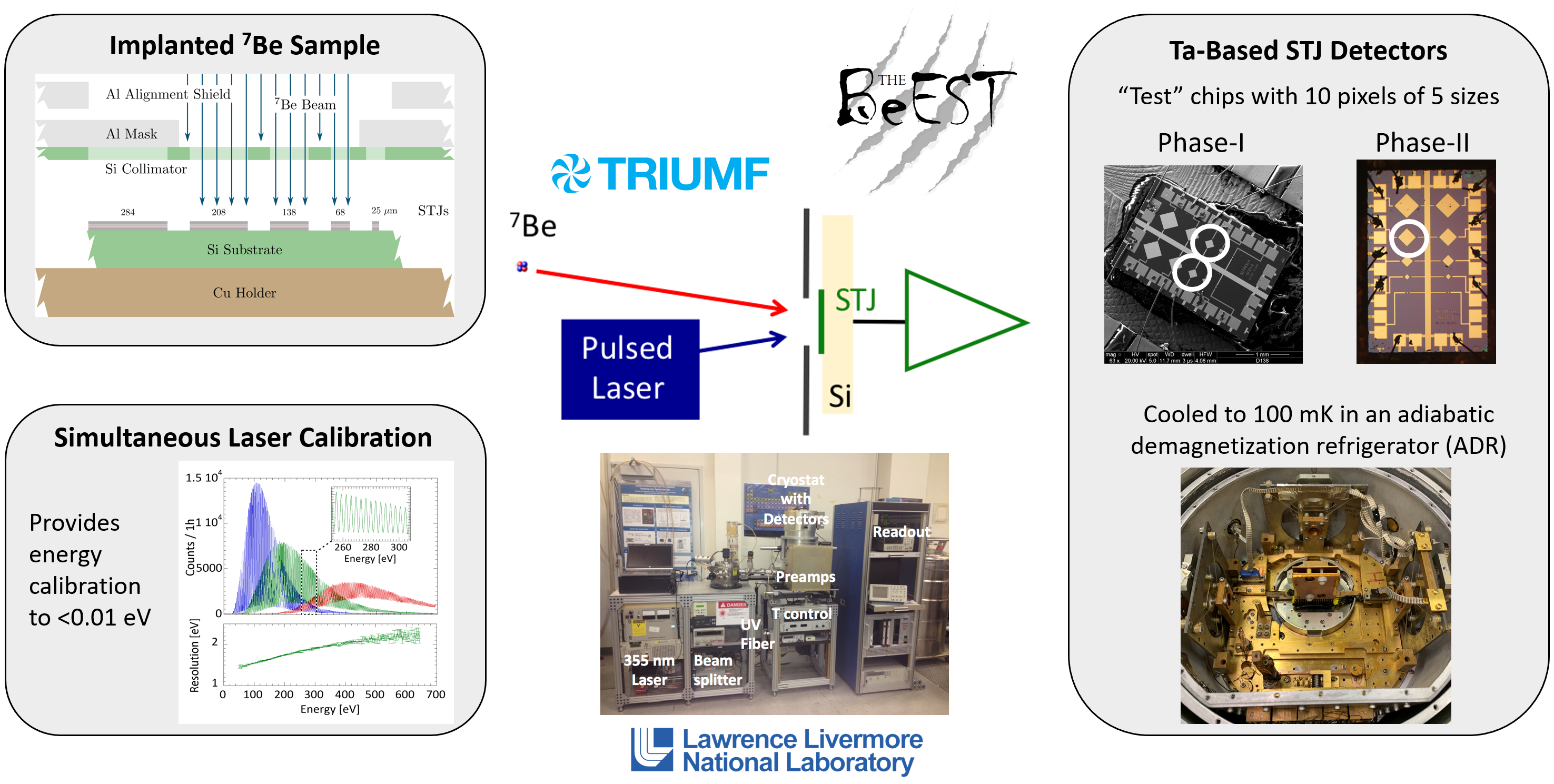
The Beryllium Electron capture in Superconducting Tunnel junctions Experiment
The search for sterile neutrinos is among the brightest possibilities in our quest for understanding the microscopic nature of dark matter. Sterile neutrinos, unlike the active neutrinos in the Standard Model (SM), do not couple to left-handed currents in the weak interaction and are best observed via their mass–generated effects that result from momentum conservation with SM particles. This can be done through high–precision measurements of electron capture (EC) nuclear decay where the final state only contains the neutrino and a recoiling atom. This approach is a powerful, model-independent method in the search for beyond SM scenarios since it relies only on the existence of a heavy neutrino admixture to the active neutrinos, which is a generic feature of neutrino mass mechanisms, and not on the model–dependent details of their interactions. The BeEST (beast) experiment employs the decay–momentum reconstruction technique to precisely measure the 7Be 7Li recoil energy spectrum in superconducting tunnel junctions (STJs).
Recent News
Searching for Ghost Particles with a Mechanical Sensor
Funding Sources
Funding Sources

